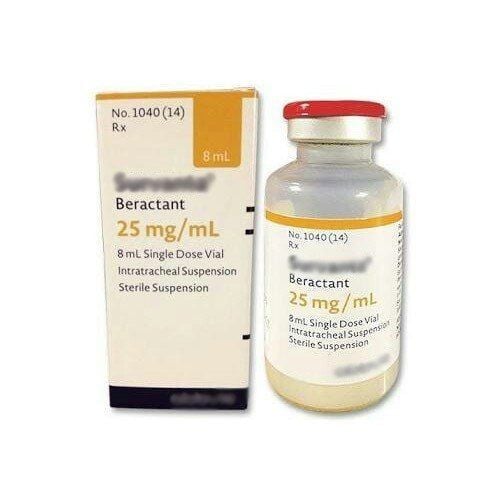This is an automatically translated article.
The article is expertly consulted by Master, Doctor Nguyen Thi Mai Anh - Doctor of Radiology - Department of Diagnostic Imaging and Nuclear Medicine - Vinmec Times City International General Hospital. Doctor Nguyen Thi Mai Anh has nearly 10 years of experience in the field of diagnostic imaging, especially in imaging breast and thyroid cancer.Endometrial disease is a very common disease in premature infants, appearing within a few hours to a few days after birth, potentially leading to respiratory failure and very dangerous to the health of the newborn. Besides the clinical signs, the X-ray image of the endocardium in premature infants also plays a very important role in the diagnosis of this pathology.
1. What is endocardial disease?
In premature infants, endocarditis is one of the most common diseases. The disease occurs in a few minutes, hours to a few days after birth with manifestations of severe respiratory failure not due to causes such as bacterial infection, choking amniotic fluid, inhalation of meconium...To diagnose membrane disease In infants, it is necessary to combine clinical pathological features and X-ray images of endothelial disease to make the most accurate diagnosis.
Inner membrane disease, also known as neonatal respiratory distress syndrome, usually occurs in newborns with an incidence of 1%, and with premature infants, this rate is higher with 10%. According to some studies, the disease occurs more in boys and less in girls.

Đối với những trẻ em sinh non tháng thì bệnh màng trong là một trong những bệnh lý phổ biến nhất
2. Risk factors for endothelial disease
Some risk factors include: Prematurity, low birth weight, maternal diabetes or asphyxia at birth.With the advancement of medicine in recent years, the disease tends to decrease gradually over time, but the level of danger and life-threatening of newborn patients is still a big issue that needs to be considered. heart.
In the respiratory system of children, surfactant plays an extremely important role in regulating the surface tension in the alveoli inside the lungs to prevent atelectasis in the patient. For premature babies, the enzymes that catalyze the production of Surfactant in the body are not fully developed until about 34-35 weeks of gestation, so for premature babies, there is a risk of surfactant deficiency. is very high, which exposes the alveolar system to certain pathological problems that cause neonatal endocardial disease.
3. Diagnostic criteria for endothelial disease
Some diagnostic criteria for endocardial disease are required to confirm whether a pediatric patient has endocardial disease or not include:Premature baby Signs of respiratory distress after birth Signs of X – Inner pleural lung disease. In which, a number of clinical signs should be noted for early detection and accurate diagnosis of the disease are:
Breathing rate above 60 times/minute Signs of rising and falling nostrils Signs of retracting the sternum or retracting the chest cavity intercostal space. The child has signs of groaning with respect to expiration Physical examination shows markedly reduced ventilation on both sides of the child's skin Color of the child's skin changes, pale and paler, may have cyanosis of the extremities or cyanosis of the oral mucosa. When the patient has signs of upper respiratory failure, the degree of respiratory failure will be assessed through the Silverman scale so that appropriate treatment indications can be made in each case, including 3 levels: No respiratory failure respiratory failure, moderate to severe respiratory failure.

Trẻ sinh non là một trong những tiêu chuẩn để chẩn đoán bệnh màng trong
4. X-ray image of the lungs with endocardial disease
X-ray of the endocardium is considered one of the most valuable subclinical indications in the diagnosis and treatment of endocardial disease in infants.Some features of X-ray images of endocardial disease in premature infants are reduced lung volume compared to normal, diffuse granular meshwork as well as air retention in the bronchial branches in the lungs. .
In addition, some other X-ray signs of endocardial disease help to make the staging of the disease clearer and more specific, so that appropriate treatment measures can be applied as follows:
Stage 1: The lung parenchyma shows fine particles suggesting microscopic atelectasis. Stage 2: Symptoms similar to stage one are accompanied by air retention in the bronchial trees. In addition, the margin of the heart also has obvious limitations to distinguish it from the pulmonary parenchyma. Stage 3: The image of the heart shadow becomes blurred, indistinguishable from surrounding structures, the border of the heart may be partially erased. Stage 4: At this stage, the chest X-ray image of endocardial disease is characterized by a white color on the film, indistinguishable between the lungs and the heart. The above staging signs based on radiographic techniques are usually valid after 6 hours postpartum, but in the first hours after birth, there may be signs that confuse the diagnosis of endocardial disease. , which can be misdiagnosed with some other diseases such as the condition where excess fluid is still left in the child's lungs due to incomplete absorption.
Therefore, if the X-ray is taken at the wrong time, the signs of endocardial disease cannot be clearly seen. In particular, for children with indications for X-ray with mechanical ventilation with high pressure and using Surfactant, the X-ray image of the endocardium disease will be clearer, helping to diagnose more accurately.

X – quang phổi bệnh màng trong được xem là một trong những chỉ định cận lâm sàng có giá trị rất cao trong chẩn đoán và điều trị bệnh màng trong ở trẻ sơ sinh
5. Conclusion
X-ray of the endocardium is one of the first laboratory tests to contribute to the diagnosis of endocardial disease in neonates, especially those born prematurely. However, in order to bring the highest efficiency, pediatric patients need to have specific indications about X-ray such as time of taking, shooting position... so that the X-ray images of endocardial disease are clear. as possible, to facilitate the diagnosis.Pediatrics department at Vinmec International General Hospital is the address for receiving and examining diseases that infants and young children are susceptible to: viral fever, bacterial fever, otitis media, pneumonia in children, ... With modern equipment, sterile space, minimizing the impact as well as the risk of disease spread. Along with that is the dedication from the doctors with professional experience with pediatric patients, making the examination no longer a concern of the parents.
Please dial HOTLINE for more information or register for an appointment HERE. Download MyVinmec app to make appointments faster and to manage your bookings easily.
MORERespiratory failure due to endocardial disease in premature infants Differential diagnosis of acute respiratory failure in infants How to recognize acute respiratory failure in infants?













